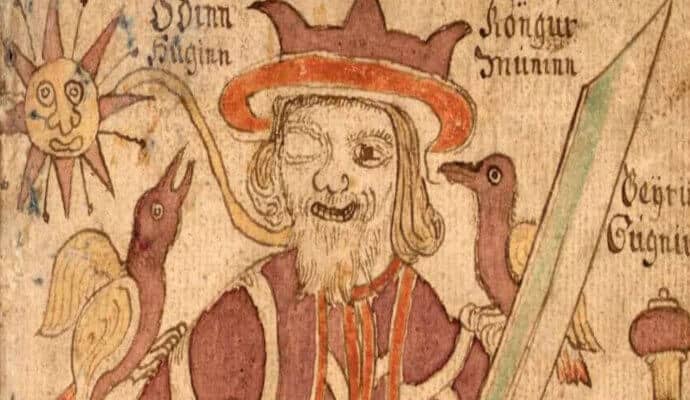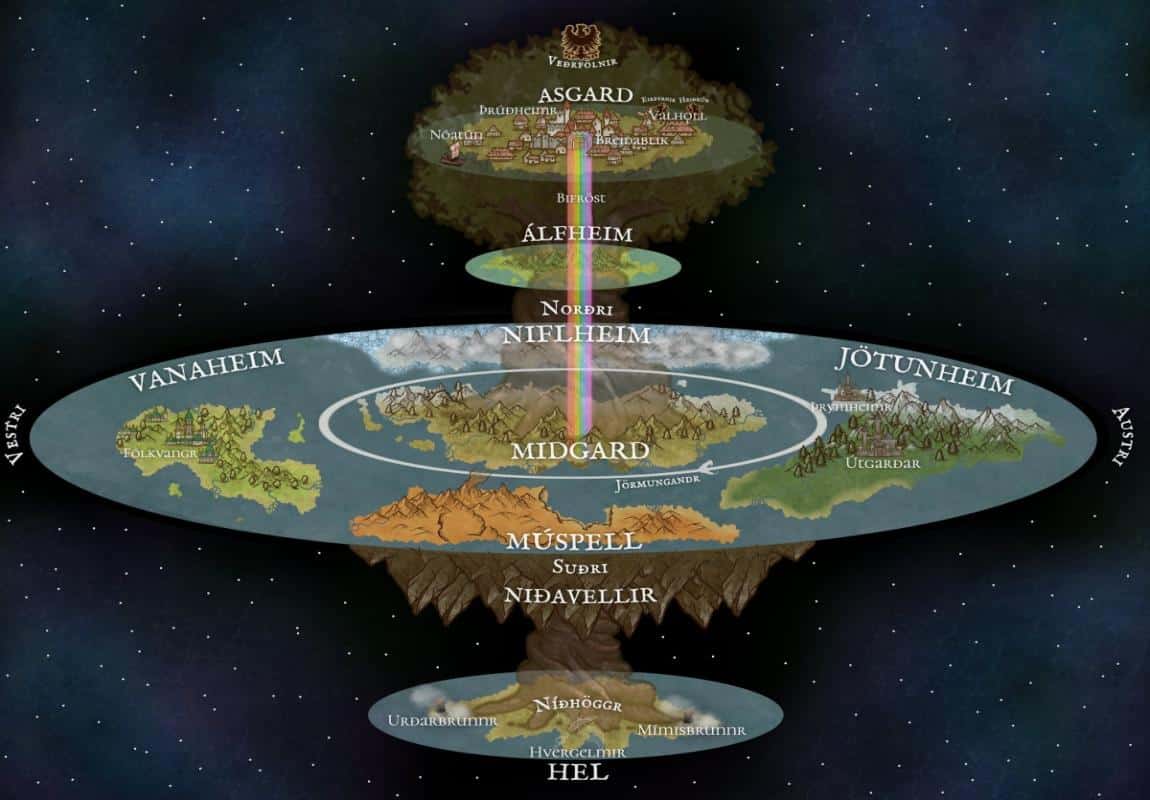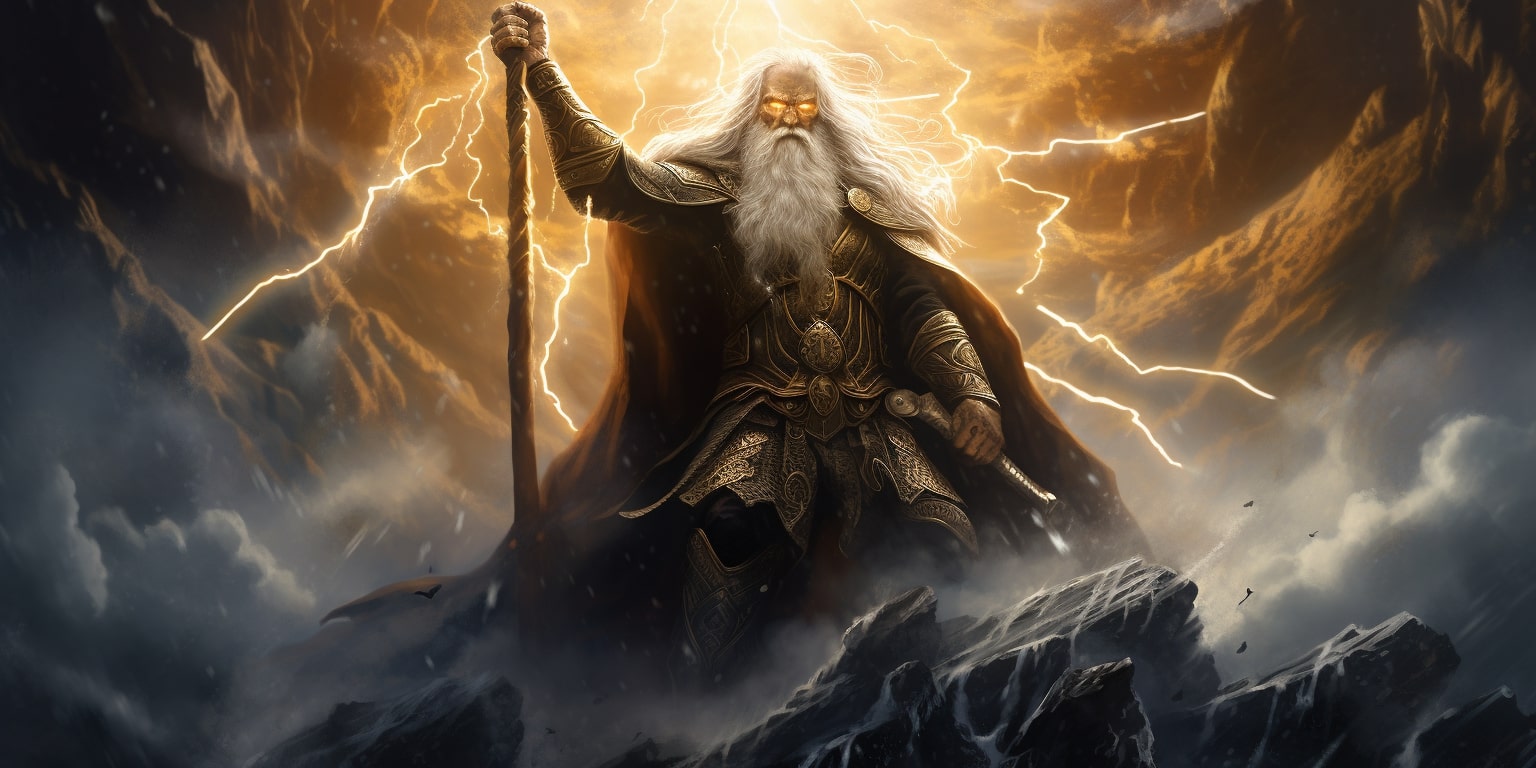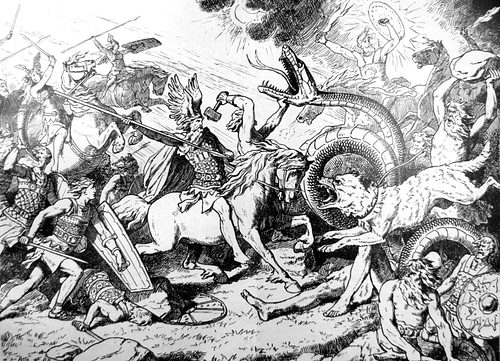Nordic Discovery
Overview of Norse Mythology
Norse mythology includes the pre-Christian religion, beliefs, and legends of the people of Scandinavia, including those who settled on the island of Iceland – where much of the written material of Norse mythology is found. The famous version of Norse mythology is the mythology of the Germanic peoples, formed from the mythology of the pre-existing Indo-European peoples.
The religion of the Northern European peoples is not based on a “truth” transmitted directly from gods to humans (although there are also stories of mortals being visited by gods). It does not have formal texts such as the Bible—the Holy of Christianity or the Quran of Islam. Norse mythology was passed down orally in the form of long poems. The transmission of Norse religion was strongest during the Viking period. People learn about Norse mythology mainly through the Edda epics and documents recorded during the Christian period expanding to the Scandinavian region. Norse mythology has a great influence on literary and artistic works.
Source
Norse mythology existed mainly through word of mouth, so it was largely lost. However, not all is lost thanks to the accounts of Christian scholars, especially the Eddas and the Heimskringla of Snorri Sturluson – who believed that the pre-Christian gods religion was not evil. Another notable work is Saxo Grammaticus’s Gesta Danorum. However, the Norse gods in this work are heavily modified to fit natural and historical events.
The Prose Edda was written in the early 13th century by Snorri Sturluson, an Icelandic poet, leader, and diplomat. It is intended primarily as a handbook for budding poets. The Prose Edda includes commentaries on traditional figures commonly used in poetry. Thanks to this work, discrete stories in Norse mythology are told systematically and continuously.
The Verse Edda is said to have appeared 50 years after the Prose Edda. It consists of 29 long poems, of which 11 are about gods, and the rest are about mythological heroes such as Sigurd of the Volsung family (Sigfield in the German Nibelungenlied epic). Although scholars generally believe that it was composed after the Edda in prose, the work’s style and poetic form indicate that the poems in it were composed long before their manuscripts appeared.
In addition to the above documents, there are also rune inscriptions such as those on stone tablets at Rök and the Kvinneby amulet which are also valuable research sources. There are also engravings and drawings showing scenes from Norse mythology such as Thor’s fishing trip, scenes from the epic Volsunga, Odin and Sleipnir, Odin being swallowed by Fenrir, and Hyrrokkin attending Baldr’s funeral.
The universe in Norse mythology

In Norse mythology, the Earth is a flat disc placed on the branch of the world tree Yggdrasil. Asgard, where the gods live, is located in the center of the disc. The only road to Asgard is the Rainbow Bridge (or Bifröst Bridge). The giants live in Jotunheimr (meaning “land of the giants”). The dead went to a cold and dark place called Niflheim ruled by Hel, Loki’s daughter. Somewhere to the south lies the fiery region of Muspelheim, where fire giants live. Other supernatural lands are Álfheim – the kingdom of white elves, Svartálfaheim – the kingdom of black elves, and Nidavellir – the kingdom of dwarves. Between Asgard and Niflheim is Midgard (or Middle-earth), where humans live.
Opposition is an important component of Norse mythology’s view of the universe. For example, the world is made of ice and fire.
Supernatural forces
There are three divine “clans” in Norse mythology: Aesir (Æsir), Vanir, and Jotun (referred to as giants in this article). The difference between the Aesir and Vanir clans (collectively known as the gods) is only relative. There was a war between these two divine clans, which was won by the Aesir side. But they accepted a compromise to rule the world together and to keep the peace, the two sides exchanged hostages and there were marriages between members of the two clans. Some gods belong to both places. Some scholars speculate that this story reflects the dominance of the gods of the invading Indo-Europeans over the gods of the native peoples. However, this is just a hypothesis. Some argue that the Aesir/Vanir distinction is just a Norse version of the Indo-European pantheon, similar to the distinction between the Olympian gods and the Titans in Greek mythology.
The Aesir and Vanir were often hostile to the Iotnar tribe (singular Iotunn or Jotuns, in Old English Eotenas or Entas). This tribe is similar to the Titans and Gigantos in Greek mythology and are often called giants although some people also call them demons. However, the Aesir are descended from Iotnar and have had members of both the Aesir and Vanir intermarry with them. The names of some giants are mentioned in the Edda epic. Giants are often seen as embodiments of natural forces. There are two types of giants: ice giants and fire giants. There are also elves and dwarves. Their role in Norse mythology is unknown. They are often said to be allies of the Aesir-Vanir gods.
Other supernatural creatures include the giant wolf Fenrir and the sea serpent Jörmungandr which coils around the Earth. These two monsters are the children of the trickster god Loki and a giantess. There are also two crows Hugin and Munin (meaning “thought” and “memory”) who help Odin – the leader of the gods – understand the world situation and the squirrel Ratatosk runs on the branches of the tree. The world of Yggdrasil at the center of the universe.
Like other polytheistic religions, in Norse mythology, there is no good-evil confrontation like in Middle Eastern beliefs. The giants of Norse mythology are not intrinsically evil. They are rude, noisy, and uncivilized to be more precise. The main theme in Norse mythology is the opposition between order and chaos. The gods represent order and the giants and monsters represent chaos.
Voluspa: the beginning and end of the world
The fate of the entire universe is described in the Völuspá (“Prophecy”) – one of the most notable poems in the Verse Edda. In Völuspá, Odin – the leader of the gods calls the spirit of a Volva (“prophet”) to ask about the past and future of the world. The prophetess asked Odin again if he wanted to know that. Odin emphasized that as king of the gods, he needed that knowledge. Finally, the prophetess told Odin the secrets of the past and future and then sank back into darkness.
The process of creating the world
Initially, the world only included the icy land of Niflheim and the fiery land of Muspelheim. Between these two lands is Ginnungagap – the void where nothing lives. In Ginnungagap, Muspelheim’s fire transformed Niflheim’s ice into the first giant Ymir and the giant bull Auðumbla. Ymir lived on this cow’s milk. The ice-licking bull Audumbla made the first god Búri father of Borr, and Borr was the father of the first three Aesir: Odin, Vili, and Ve. Ymir is both male and female, from Ymir the giant race was born. Then Borr’s children Odin, Vili, and Ve killed Ymir and used Ymir’s body to build the world.
The gods regulate the cycle of day and night as well as the seasons. Sol, daughter of Mundilfari and wife of Glen, was the Sun goddess. Every day the god travels across the sky on a chariot pulled by two horses, Alsvid and Arvak. The path of the Sun is commonly known as Alfrodull (“Glory of the Elves”). Sol is constantly chased by Skoll (another name for Fenrir). The eclipse is a sign that Skoll is close to capturing Sol. According to prophecy, the sun god Sol will eventually be caught up and eaten by Skoll. However, I will be replaced by my daughter. Sol’s brother, the Moon god Mani, was also chased by another wolf named Hati. The Earth is protected from the full heat of the Sun thanks to Svalin standing between Sol and the ground. In Norse beliefs, light does not radiate from the Sun god but from the manes of the god’s two chariot horses, Alsvid and Arvak.
The first humans Ask and Embla were carved from wood and given life by the gods Odin, Hoenir (Vili), and Lodurr (Ve).
The prophetess also describes the world tree Yggdrasil and the goddesses of fate (also called norn) named Urd, Verdandi, and Skuld (referring to the past, present, and future) who sit spinning the threads of fate in its shadow. its. In addition, Odin is told about the war between the Aesir and Vanir and the death of Baldr.
Doomsday
The future of the Norse religion is quite dark. The forces of darkness and chaos will overcome the gods who represent order. Loki and his children will break free from their chains. The dead from Niflheim return to the living world to attack the living. Heimdall, the god-standing guard at the gates of Asgard, will summon the forces of heaven with a blast of his horn. Then broke out the war between chaos and order (still known as Ragnarök). The fate of the gods is defeat in this battle. They know that so they will gather the best warriors, the Einherjar, to fight alongside them. But in the end, they had to watch helplessly as the world sank back into darkness. The gods and the order they created will be destroyed. Odin himself will be devoured by Fenrir
However, a few gods and humans will survive to build a new world. Scholars are still debating whether this is a sign of Christian influence or not. Otherwise, Voluspa’s apocalyptic views may reflect an ancient Indo-European worldview.
Kings and heroes
Besides stories about gods, Norse mythology also tells about mortal kings and heroes. These stories reflect the formation of the Norse tribes and nations. Some scholars believe that these stories are based on real events and can be used as a source for studying Scandinavian history.




